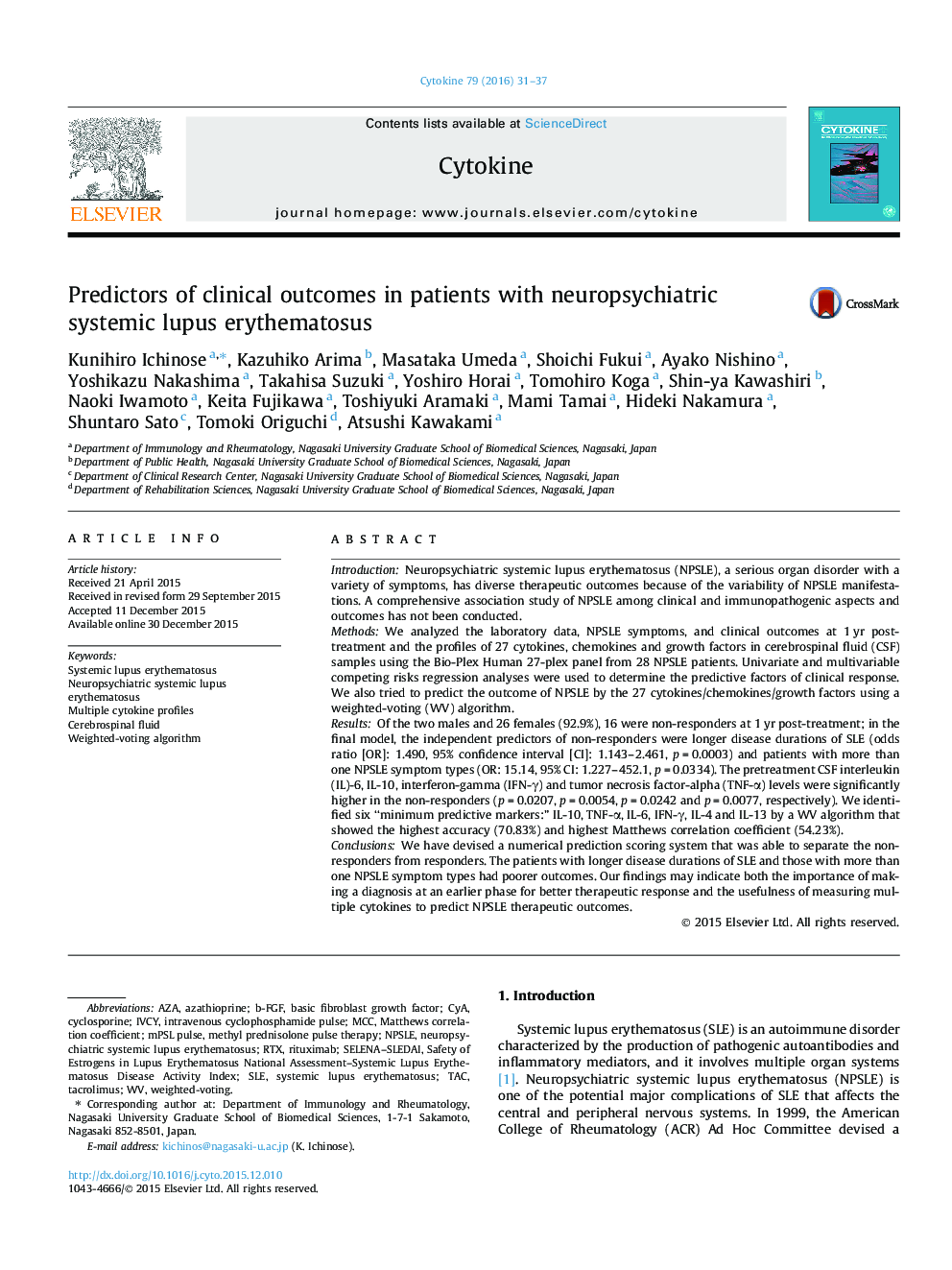| کد مقاله | کد نشریه | سال انتشار | مقاله انگلیسی | نسخه تمام متن |
|---|---|---|---|---|
| 2793830 | 1568733 | 2016 | 7 صفحه PDF | دانلود رایگان |
• Early diagnosis and treatment of NPSLE are still difficult questions.
• The association between immunopathogenic aspects of NPSLE and outcomes has not been conducted.
• We were able to identify six minimum markers that can be used to predict outcomes.
• Measuring multiple cytokines may contribute to predict NPSLE therapeutic outcomes.
• Our findings may indicate the importance of making a diagnosis at an earlier phase for better therapeutic response.
IntroductionNeuropsychiatric systemic lupus erythematosus (NPSLE), a serious organ disorder with a variety of symptoms, has diverse therapeutic outcomes because of the variability of NPSLE manifestations. A comprehensive association study of NPSLE among clinical and immunopathogenic aspects and outcomes has not been conducted.MethodsWe analyzed the laboratory data, NPSLE symptoms, and clinical outcomes at 1 yr post-treatment and the profiles of 27 cytokines, chemokines and growth factors in cerebrospinal fluid (CSF) samples using the Bio-Plex Human 27-plex panel from 28 NPSLE patients. Univariate and multivariable competing risks regression analyses were used to determine the predictive factors of clinical response. We also tried to predict the outcome of NPSLE by the 27 cytokines/chemokines/growth factors using a weighted-voting (WV) algorithm.ResultsOf the two males and 26 females (92.9%), 16 were non-responders at 1 yr post-treatment; in the final model, the independent predictors of non-responders were longer disease durations of SLE (odds ratio [OR]: 1.490, 95% confidence interval [CI]: 1.143–2.461, p = 0.0003) and patients with more than one NPSLE symptom types (OR: 15.14, 95% CI: 1.227–452.1, p = 0.0334). The pretreatment CSF interleukin (IL)-6, IL-10, interferon-gamma (IFN-γ) and tumor necrosis factor-alpha (TNF-α) levels were significantly higher in the non-responders (p = 0.0207, p = 0.0054, p = 0.0242 and p = 0.0077, respectively). We identified six “minimum predictive markers:” IL-10, TNF-α, IL-6, IFN-γ, IL-4 and IL-13 by a WV algorithm that showed the highest accuracy (70.83%) and highest Matthews correlation coefficient (54.23%).ConclusionsWe have devised a numerical prediction scoring system that was able to separate the non-responders from responders. The patients with longer disease durations of SLE and those with more than one NPSLE symptom types had poorer outcomes. Our findings may indicate both the importance of making a diagnosis at an earlier phase for better therapeutic response and the usefulness of measuring multiple cytokines to predict NPSLE therapeutic outcomes.
Journal: Cytokine - Volume 79, March 2016, Pages 31–37
